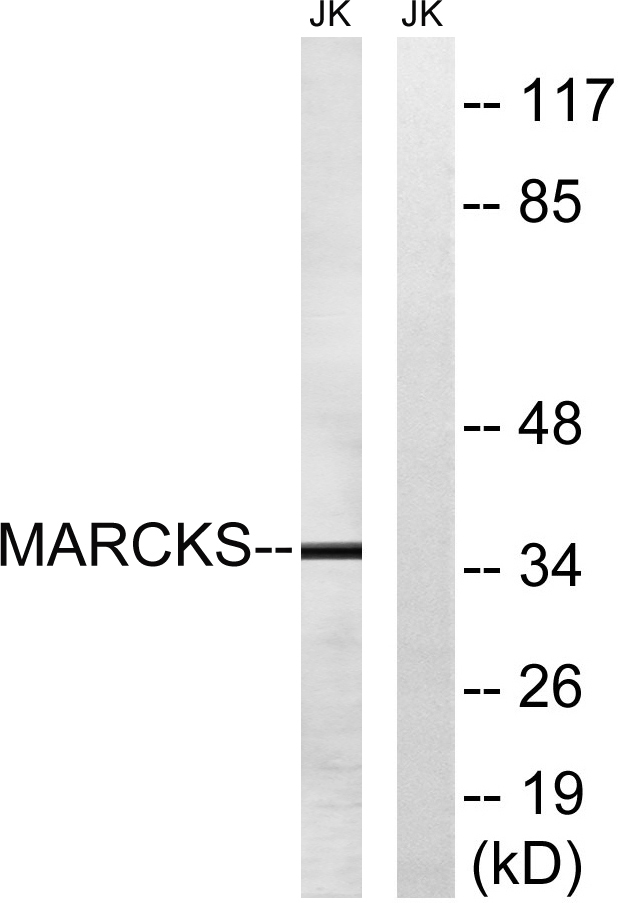产品名称
MARCKS Rabbit Polyclonal Antibody
别名
MARCKS; MACS; PRKCSL; Myristoylated alanine-rich C-kinase substrate; MARCKS; Protein kinase C substrate; 80 kDa protein, light chain; 80K-L protein; PKCSL
蛋白名称
Myristoylated alanine-rich C-kinase substrate
存储缓冲液
Liquid in PBS containing 50% glycerol, 0.5% BSA and 0.02% New type preservative N.
Human Gene Link
http://www.ncbi.nlm.nih.gov/sites/entrez?db=gene&term=4082
Human Swissprot No.
P29966
Human Swissprot Link
http://www.uniprot.org/uniprotkb/P29966/entry
Mouse Gene Link
http://www.ncbi.nlm.nih.gov/sites/entrez?db=gene&term=17118
Mouse Swissprot No.
P26645
Mouse Swissprot Link
http://www.uniprot.org/uniprot/P26645
Rat Swissprot Link
http://www.uniprot.org/uniprot/P30009
免疫原
The antiserum was produced against synthesized peptide derived from human MARCKS. AA range:126-175
特异性
MARCKS Polyclonal Antibody detects endogenous levels of MARCKS protein.
稀释度
WB 1:500 - 1:2000. IF 1:200 - 1:1000. ELISA: 1:20000. Not yet tested in other applications.
宿主
Polyclonal, Rabbit,IgG
背景介绍
The protein encoded by this gene is a substrate for protein kinase C. It is localized to the plasma membrane and is an actin filament crosslinking protein. Phosphorylation by protein kinase C or binding to calcium-calmodulin inhibits its association with actin and with the plasma membrane, leading to its presence in the cytoplasm. The protein is thought to be involved in cell motility, phagocytosis, membrane trafficking and mitogenesis. [provided by RefSeq, Jul 2008],
组织表达
Blood,Brain,Epithelium,Muscle,Skin,
细胞定位
Cytoplasm, cytoskeleton . Membrane ; Lipid-anchor .
信号通路
Fc gamma R-mediated phagocytosis;
功能
function:MARCKS is the most prominent cellular substrate for protein kinase C. This protein binds calmodulin, actin, and synapsin. MARCKS is a filamentous (F) actin cross-linking protein.,PTM:Phosphorylation by PKC displaces MARCKS from the membrane. It also inhibits the F-actin cross-linking activity.,similarity:Belongs to the MARCKS family.,
纯化
The antibody was affinity-purified from rabbit antiserum by affinity-chromatography using epitope-specific immunogen.


